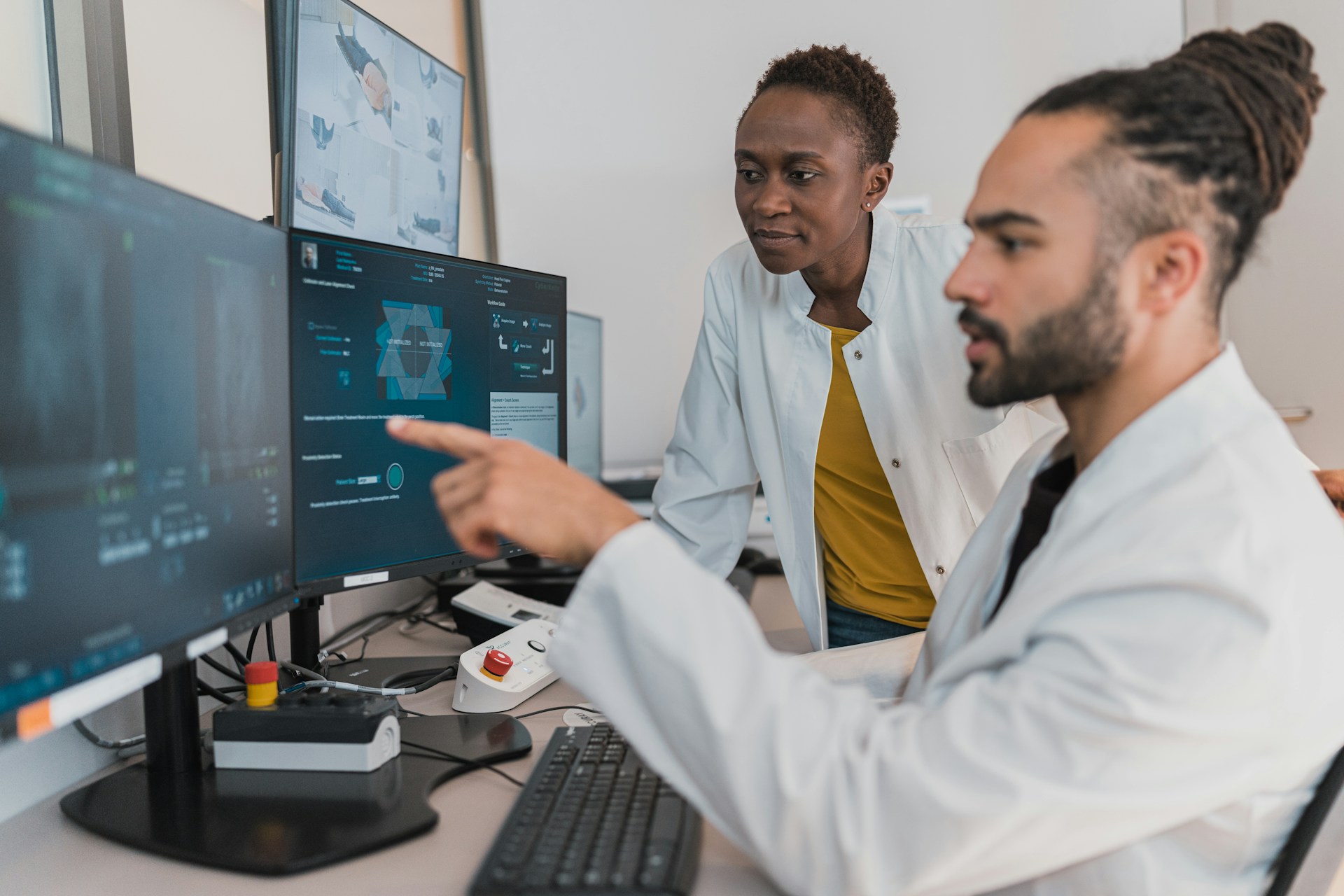The Power of AI in Healthcare: Transforming Medical Applications with Retool
The convergence of Artificial Intelligence (AI) and healthcare is fundamentally reshaping the
medical landscape. From diagnosing complex diseases to personalizing treatment regimens,
AI is proving to be a transformative force in revolutionizing medical practices. When
integrated with a robust tool like Retool, the potential to enhance healthcare workflows and
improve decision-making capabilities is significantly amplified.
In this article, we will explore how AI is reshaping the healthcare sector and why the synergy
with Retool can push these advancements even further.
AI in Healthcare: The Current Landscape

AI has made remarkable strides across various medical applications, including:
-
Medical Imaging: AI-powered algorithms now interpret X-rays, CT scans, and MRIs
more quickly and often more accurately than human radiologists, reducing diagnostic
times and improving patient outcomes. For instance, AI models can identify early
signs of cancer or abnormalities that may be overlooked by the human eye. -
Predictive Analytics: By analyzing vast datasets, AI can predict disease outbreaks,
assess patient risk profiles, and even anticipate individual responses to treatments.
This capability enables healthcare professionals to intervene earlier and tailor
treatments to meet each patient’s unique needs. -
Drug Discovery: The ability of AI to process large volumes of data rapidly has
revolutionized drug discovery. Machine learning models can analyze chemical
compounds, predict their interactions, and recommend promising candidates for
further testing, thus reducing the time and cost associated with bringing new drugs to
market. -
Personalized Medicine: AI facilitates the development of precise and tailored
treatment plans by analyzing a patient’s genetic profile, lifestyle, and medical history.
This advancement moves us closer to the realization of personalized medicine,
where treatments are as unique as the patients receiving them.
While the impact of AI on healthcare is already significant, ensuring that these sophisticated
systems are accessible and deployable by healthcare professionals remains paramount.
This is where Retool plays a crucial role.
Why Retool?
For those unfamiliar, Retool is a low-code development platform that enables organizations
to build internal tools and applications efficiently. Renowned for its drag-and-drop interface,
seamless integrations with databases and APIs, Retool empowers non-developers to create
robust applications with minimal coding experience.
In the healthcare sector, Retool serves as a vital tool for accelerating AI adoption. Here’s
how:
-
Ease of Integration: Many healthcare organizations grapple with outdated systems,
complicating the integration of cutting-edge AI solutions. Retool allows healthcare
teams to create custom interfaces that seamlessly integrate with AI models and existing Electronic Health Record (EHR) systems, streamlining data collection and analysis. - Custom Dashboards: AI generates vast amounts of data that can be overwhelming. Retool distills this information into user-friendly dashboards, enabling healthcare professionals to access AI-generated insights in real time. Whether monitoring patient outcomes, predictive analytics, or treatment recommendations, Retool provides a simplified interface for clinicians to engage with AI-driven insights.
- Workflow Automation: While AI can predict outcomes and optimize processes, healthcare teams often need to act on these insights promptly. Retool enables teams to develop automated workflows, ensuring that when AI identifies a high-risk patient or flags an anomaly in medical imaging, appropriate actions—such as alerting the medical team or scheduling follow-up tests—are triggered automatically.
- Customizable Interfaces for AI-Enhanced Tools: Many AI solutions exist as standalone software that may not align with the workflows of individual hospitals or clinics. Retool allows healthcare organizations to build customizable interfaces that interface directly with AI systems, facilitating easier adoption of the technology by doctors, nurses, and administrators.
Use Cases: AI + Retool in Action

-
Radiology Departments: Radiologists can benefit from an AI tool that scans for
anomalies in medical imaging data. A custom Retool dashboard could display
flagged images for review, enabling radiologists to make quicker decisions on cases
requiring urgent attention. -
Hospital Operations: Predictive analytics powered by AI can forecast patient
volumes, bed occupancy rates, and staffing needs. Retool can assist hospitals in
creating custom tools that visualize these predictions and automate responses, such
as reallocating staff or preparing resources based on anticipated demand. -
Personalized Patient Care: Retool can provide custom interfaces where physicians
input patient data, access AI-generated treatment recommendations, and adjust
these based on the patient’s unique needs. This functionality facilitates real-time,
data-driven, and patient-focused decision-making.
A Future of Synergy
The potential for AI in healthcare is vast, and platforms like Retool are essential for
actualizing these innovations. By enabling seamless integration, creating user-friendly
interfaces, and automating workflows, Retool can accelerate the adoption of AI in healthcare
systems worldwide.
The powerful combination of AI’s ability to process and analyze data at scale and Retool’s
capacity to streamline and customize workflows opens new frontiers in personalized
medicine, operational efficiency, and patient care.
As AI continues to evolve, tools like Retool will ensure that healthcare professionals can
harness its full potential, transforming theoretical benefits into tangible outcomes for patients
globally.


Leave a Reply